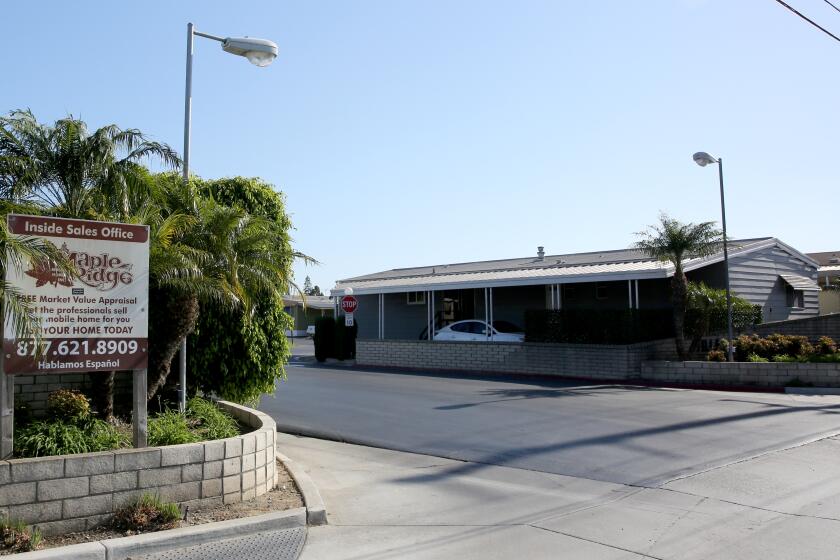Sorting things ouit
- Share via
Don Cantrell
It may take years to gain a full picture of a local coach in the
world of sports, but it often becomes a most interesting one once one has
come to observe an in-depth portrait.
A writer sometimes reflects back and comes to accept the fact that he
didn’t move with a normal flow of questions initially.
Consider Ray Rosso, the chief grid coach at Orange Coast College from
1948-1955. In fact, he was one of the earliest football mentors to take a
team to the Junior Rose Bowl after World War II. His first grid task
after serving the U.S. as a Navy fighter pilot, was Chaffey College at
Ontario. He guided them to the bowl against an Oklahoma team and won.
In addition, he was offered another bowl game in 1949, his second year
at Orange Coast. He asked his 8-2-0 team if it wished to go after a long
season. Harlo LeBard, the team quarterback, said many may have loved the
idea, but the long season had taken a toll on the injury list, so they
bowed away.
Coast also won the Eastern Conference title in 1951, but found a bowl
offer going to San Bernardino, not Coast. San Berdoo was deemed the
conference title winner initially and cheered for the bowl offer. Then
the college had to forfeit four games due to two ineligible players and
OCC took the trophy. However, the bowl in question did not extend an
offer to Coast. No reason was given.
We once assumed that Rosso was born and raised in northern California
and attended Lafayette High School near Oakland. However, one day we were
informed of a message from Mrs. Rosso, his lovely wife whom he met at
USC. She kindly informed one staff member that her husband was born in
Italy. It was Turin, Italy.
Rosso was a short, stocky guard who came to play under Stub Allison at
the University of California, Berkeley. He never boasted about his
achievements, so few ever knew much about his prized accomplishments. In
1939, he became an honored member of the All-Pacific Coast grid squad. We
discovered recently that Rosso could also boot field goals, if asked. He
recalls making one for Cal before his career ended. It had to be a crowd
pleaser.
In the same light, we once learned about Al Irwin’s ability to boot
field goals in prep days at Harbor High. He was one of the best fullbacks
in Southern California in 1935 and had made goals before, but the one we
asked about in ’35 found him relating that the kick never got off. It was
strange, he recalled. He was a drop-kicker. He had dropped the ball for a
kick, but it never came up, which prompts one to figure it must have hit
a rock and bounced away.
Although he was one of the best backs in the Southland in ‘35, he did
not receive any top honors beyond the Orange League. There were no “CIF”
honors until 1937.
Interesting to note that one day at OCC, Rosso and Irwin, along with a
number of other coaches, competed often in handball during the noon hour.
They were all good, but the late Steve Musseau always spoke highly of
Rosso’s talent and thought he was a good No. 1.
At any rate, one might assume that Irwin was born and raised in
Newport Beach where his father later started work on an ocean front hotel
near the pier. Irwin once smiled and said he wished that was true, but
made it clear he was born in Irwin, Calif., a town founded by his father.
His love has always been centered in Newport Beach where he still lives
on the ocean front.
Another interesting note from Irwin’s years of Harbor football was the
appearance of a Cee football coach in ‘35, Irwin’s senior year on the
varsity under Coach Ralph Reed.
Reed coached numerous sports, but couldn’t handle them all so he
called on a young fellow named George Myers in ’35 to take charge of the
lightweight Cees. Myers was only 18 years old and still a student, but
Reed believed in his talent. The Cees would not be in a league, but Myers
could teach them fundamentals and prepare them physically for the
following season.
The Bee coach was a former University of Redlands grid coach named Lee
Trine. The Bees had an outstanding season in ‘35, losing only one game.
In ‘36, however, Trine coached the Bees to the first football
championship for Harbor. And the team was superbly led by fullback Rollo
McClellan and quarterback Glenn O. Thompson. The ’36 team included two
sterling Sheflin brothers, Bob and Frank. Their brother, Harold, would
become the legendary CIF fullback in 1942, leading the Tars into the
small schools CIF playoffs.
Frank Sheflin was named to the second unit All-Southern California
team in 1939 while brother Harold would be named to the first All-CIF
fullback slot in ’42 and the third All-CIF fullback spot in 1941.
All the latest on Orange County from Orange County.
Get our free TimesOC newsletter.
You may occasionally receive promotional content from the Daily Pilot.



